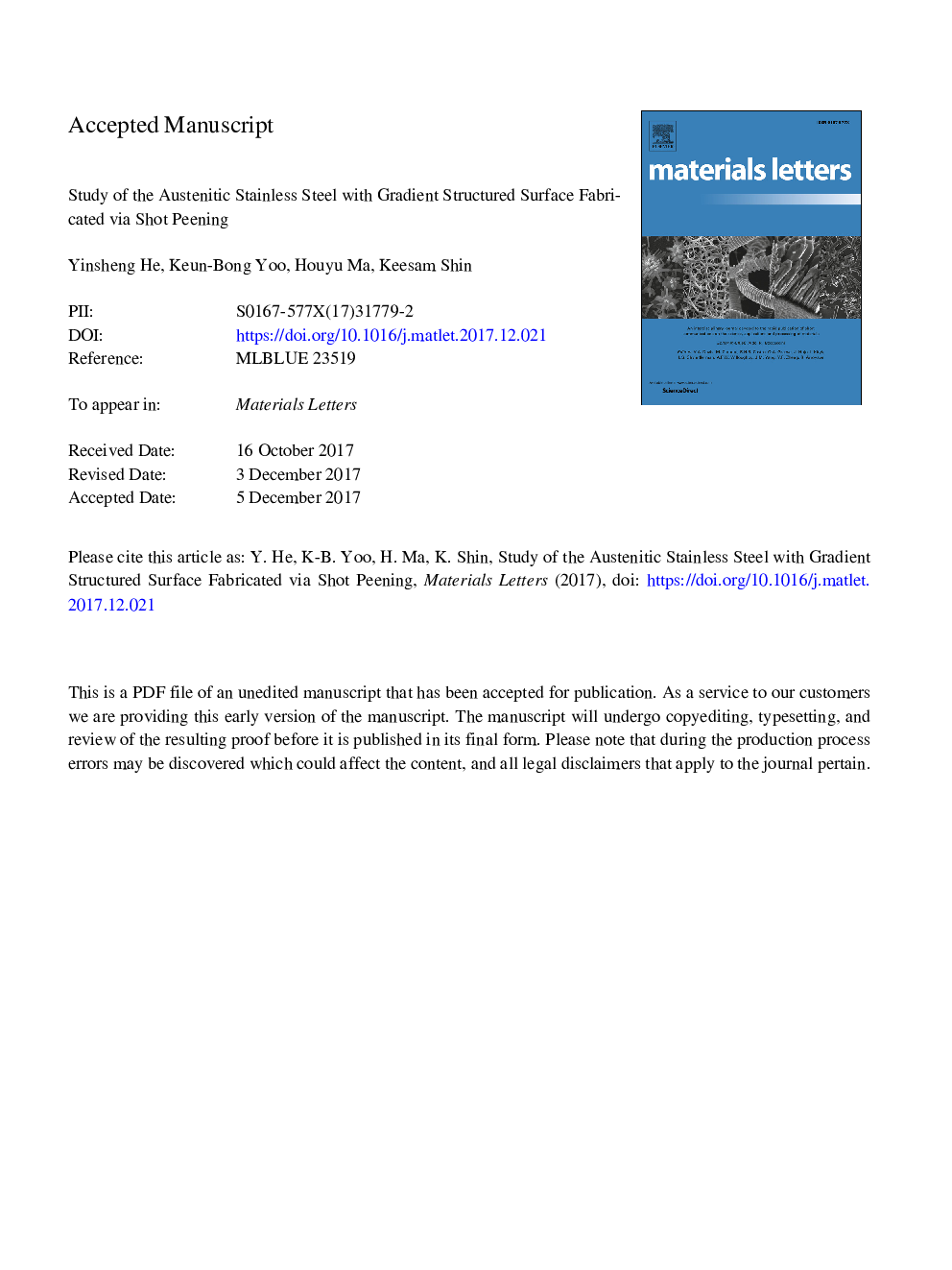| Article ID | Journal | Published Year | Pages | File Type |
|---|---|---|---|---|
| 8014873 | Materials Letters | 2018 | 11 Pages |
Abstract
A gradient-structured layer with initially nanoscale grain size increased gradually to original coarse microscale (â¼50â¯Î¼m) was fabricated on the surface of austenitic (γ) stainless steel SS304 via ultrasonic nanocrystallization surface modification (UNSM) peening. Modified cross-sectional and depth-specific plan-view (DSPV) sample preparation methods were explored with the analysis scales from macro to atom by synchrotron radiation XRD, EBSD, and TEM to determine the depth (strain) dependent deformation microstructures and grain refinement mechanism. The depth-dependent deformation microstructures were ascribed to strain-induced martensitic-transformed (SIMT) αâ²- and ε-martensite, deformation nanotwins (NT), and dislocation grids. The grain nanocrystallization mechanism was suggested as the formation of αⲠand ε grain boundaries that divided the original coarse grains (CG) to the nanoscale. The strains also appeared to play a key role in the crystallographic orientation relationship (OR) of the γ/αâ²: Kurdjumov-Sachs (K-S) and Pitsch in low strain region and Nishiyama-Wassermann (N-W) in the high strain region.
Related Topics
Physical Sciences and Engineering
Materials Science
Nanotechnology
Authors
Yinsheng He, Keun-Bong Yoo, Houyu Ma, Keesam Shin,
